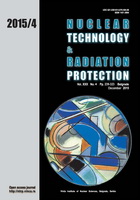
A NUMERICAL SIMULATION METHOD FOR CALCULATION OF LINEAR ATTENUATION COEFFICIENTS OF UNIDENTIFIED SAMPLE MATERIALS IN ROUTINE GAMMA RAY SPECTROMETRY

Vol.
XXX, No. 4, Pp. 239-323
December 2015
UDC 621.039+614.876:504.06
ISSN 1451-3994
Pages: 249-259
Authors: Mohamed S. Badawi
Abstract
When using gamma ray spectrometry for radioactivity analysis of environmental samples (such as soil, sediment or ash of a living organism), relevant linear attenuation coefficients should be known – in order to calculate self-absorption in the sample bulk. This parameter is additionally important since the unidentified samples are normally different in composition and density from the reference ones (the latter being e. g. liquid sources, commonly used for detection efficiency calibration in radioactivity monitoring). This work aims at introducing a numerical simulation method for calculation of linear attenuation coefficients without the use of a collimator. The method is primarily based on calculations of the effective solid angles – compound parameters accounting for the emission and detection probabilities, as well as for the source-to-detector geometrical configuration. The efficiency transfer principle and average path lengths through the samples themselves are employed, too. The results obtained are compared with those from the NIST-XCOM data base; close agreement confirms the validity of the numerical simulation method approach.
Key words: gamma ray spectrometry, linear attenuation coefficient, effective solid angle, path length, numerical simulation method
FULL PAPER IN PDF FORMAT (16.30 MB)